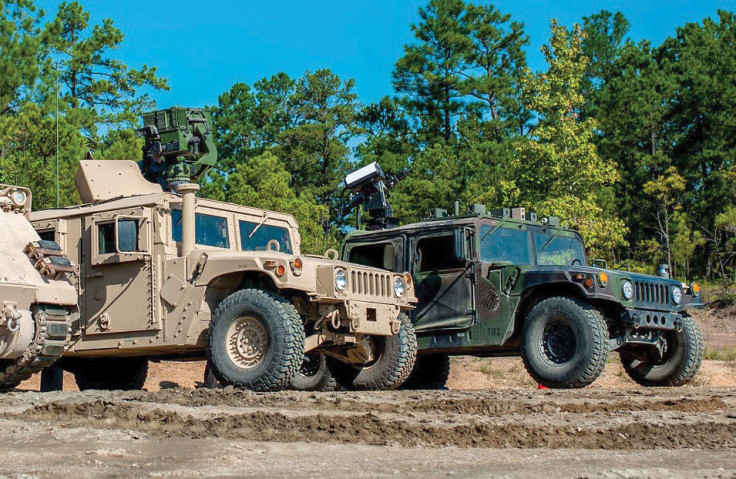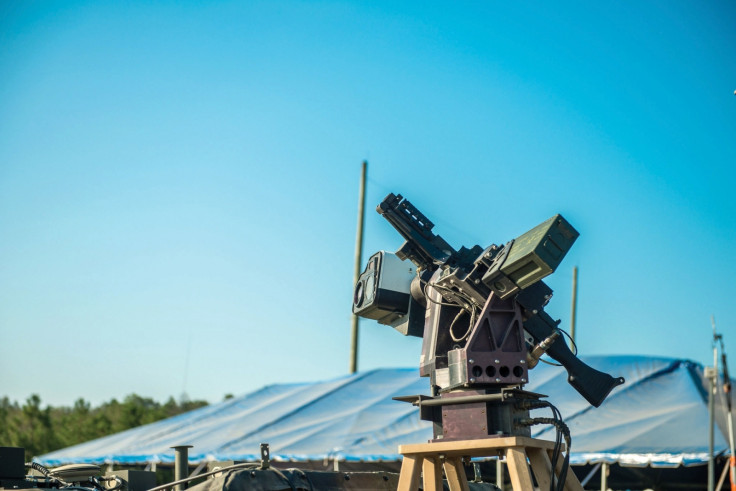US Army's self-driving Humvee, the 'Wingman', will soon be able to shoot down enemy targets
The robotic Humvee is now being tested to find out if it can engage targets with its remote-controlled machine gun.

US Army's robotic weapons programme, the "Wingman", has several machines under development and one of them, a self-driving Humvee, is now being taught how to shoot. The army is testing a robotic vehicle to find out if an autonomous machine can engage targets with its remote-controlled machine gun, Popular Mechanics reported.
The Humvee's electrically fired weapons systems, mounted on the vehicle, will also be tested. The Wingman programme is part of the Army's efforts to up their game when it comes to automation as they are behind in developing AI-based weapons when compared to the other branches of the military, notes Popular Mechanics.
The main reason for this lag, notes the report, is because unlike the Air Force with its drones, and the Navy with its uncrewed vessels and submarines, the ground, where the army operates is a much more difficult environment to create robot weapons. The ground with cities, difficult terrain, deserts, and trenches is not as easy as the sea or the open sky to build robots for.
This is where the Wingman programme comes to play. The programme has got the name as such because the Wingman accompanies a manned Humvee and works alongside a crewed vehicle. It can be used, notes the report to go ahead of the crewed vehicle to make sure it is safe for soldiers to drive up roads, or even go in search of a downed helicopter, which could be dangerous for soldiers to drive directly to.

The two vehicles that make up the Wingman are a manned M151 and an unmanned M1097 Wingman vehicle. Three soldiers placed in the M151 will be tasked with Wingman duties -- one would oversee the targeting mechanisms, one would be a standby driver in case human intervention is needed, and the third one is tasked with pulling the Wingman's gun.
The main gun of the Wingman needed to be an all-new one, notes the report, because, it is likely to receive less maintenance than one handled by a human soldier. The guns that were first mounted include a remote-controlled version of the M2 .50-calibre machine gun and an M240 7.62-mm machine gun, according to the report. While the M2 and the M240 are reliable guns, they are gas-powered, so require regular maintenance, so the Army needed a whole new weapon for their robot.
And therefore, the Advanced Remote/Robotic Armament System (ARAS) enters the scene. It is a 7.62-mm machine gun. Including the mount and 1,500 rounds of ammunition, it weighs only 410 lbs. ARAS has a heavy, fluted barrel that according to the report, is capable of burning through its entire cache of ammo in five minutes all while being able to fire 360-degrees with a 90-degree elevation and -30-degree depression.
The system can also reportedly load a fresh ammo pack in six seconds. Its Autonomous Remote Engagement System (ARES) uses target detection that is vision based.

However, for those who are starting to get a little uneasy about it, the Army has some words of reassurance. "You're not going to have these systems go out there like in 'The Terminator'," said Thomas B Udvare, deputy chief of the Wingman programme. "For the foreseeable future, you will always have a soldier in the loop."





















